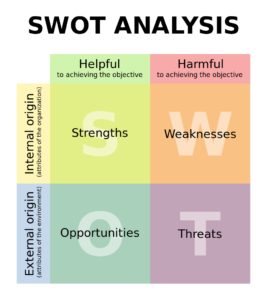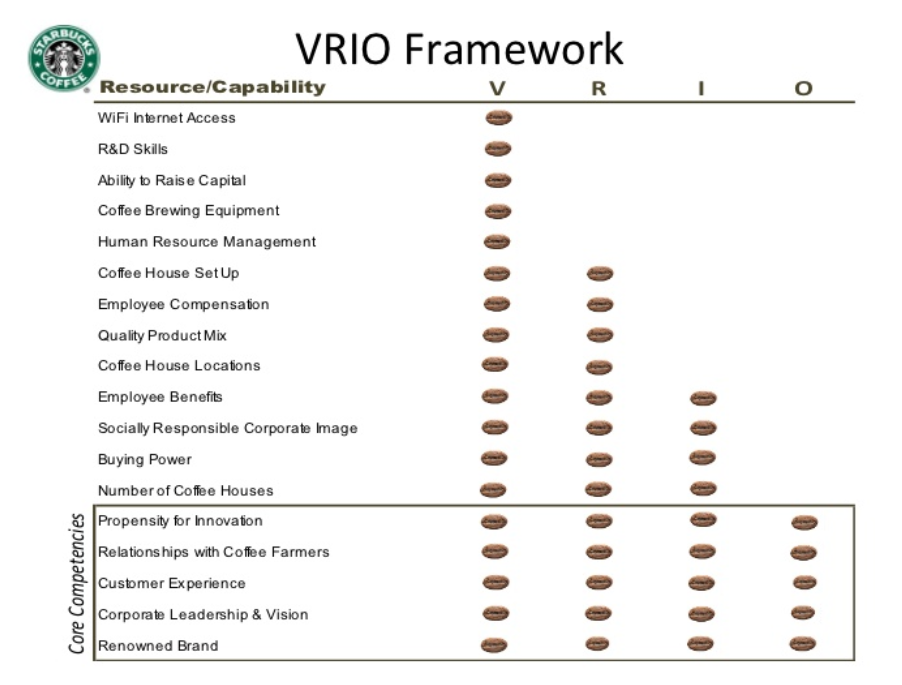Topic Objective
To understand how we can formulate effective organisational internal strategy which helps us getting sustainable competitive advantage by doing best use of organisational internal resources, strengths and capabilities
Definition
What is strategy?
Let’s understand how Mintzberg’s define strategy using 5 P’s
- Plan: Strategy is a plan – some sort of consciously intended course of action. A guideline (or set of guidelines) to deal with a situation. By this definition strategies have two essential characteristics: they are made in advance of the actions to which they apply, and they are developed consciously and purposefully.
- Ploy: So a strategy can be a ploy too, just a specific manoeuvre intended to outwit an opponent or competitor
- Pattern: Specifically, A consistent pattern in a stream of actions
- Position: Strategy is a position – therefore can be considered as a means of locating an organisation in an “environment”.
- Perspective: Strategy in this respect is to the organisation what personality is to the individual. Hence what is of key importance is that strategy is a perspective shared by members of an organisation, through their intentions and / or by their actions. In adiition, when we talk of strategy in this context, we are entering the realm of the collective mind – individuals united by common thinking and / or behaviour.
Strategic situations
Consequently describing in really simple words strategic situation is where future is dependent on decision of many people and not the individual.
Example: Reaching to some destination on time. We have a objective of reaching at some place in minimum time so we may select shortest route to reach there. This is our decision. Opposite to this however achievement of objective (reaching in time) also depends on which route other drivers take.
Analysis
Most of all formulation of organisational internal strategy starts with analysis of what we are good and weak at. Hence considering SWOT analysis here, as shown in below image there are 4 aspects
- Strength
- Weakness
- Opportunities
- Threats

As a result, “strength and weakness” are the internal factors to consider opposite to this opportunities and threats are the external factors. Hence to formulate organisational internal strategy we will consider only strength and weaknesses of organisation for analysis.
Analysis of Starbucks coffee
| Strengths | Weaknesses |
|---|---|
| Strong brand image | Higher pricing |
| Quality and high volumes | Generalised standards for most products |
| Excellent supply chain | Imitable products |
| Welcoming workplace for employees and which turned into customer satisfaction | Non diversified product range |
Identification and categorisation
First of all we have analyzed our organisational items falling into strengths and weaknesses so now we need to identify and categorize our internal resources and capabilities. Hence let’s understand resource and capability segmentation of StarBucks using VRIO framework
Since VRIO framework helps us in identification of resources and capabilities which can be a source of advantage for any organisation, therefore we will use VRIO framework divides resources and capabilities into below 4 segments.
- Value: Is the firm able to exploit an opportunity or neutralize an external threat with the organisational internal resource/capability?
- Rarity: Is control of the resource/capability in the hands of a relative few?
- Imitability: Is it difficult to imitate, and will there be significant cost disadvantage to a firm trying to obtain, develop, or duplicate the resource/capability?
- Organization: Is the firm organized, ready, and able to exploit the resource/capability? Is the firm organized to capture value?
Example 1: Starbucks

Example 2: Google
| Excellent employee management | |||
| Valuable? | Rare? | Costly to Imitate? | Is a company organized to exploit it? |
|---|---|---|---|
| Yes | Yes | Yes | Yes |
| Result: sustained competitive advantage | |||
Planning
We will prepare plan for strategy formulation once we are done with analysis and identification of our core strengths. We need to keep below things in mind while planning for strategy formulation.
- Plan should be clear & direct: Which means that the plan should direct impact the end resources or capabilities which we want to exploit
- Dominating: Plan strategy in a way it has maximum domination over organisation
- Backup plans: Always start with plan A and keep plan B (fallback plan) ready in case something goes wrong after formulating/implementing strategy
Formulating organisational internal strategy
We should consider below points while formulating organisational internal strategy.
- Translate 5000 to 5: Our organisational strategy must clearly translate bigger objective into smallest pieces which is easy to understand/implement for resources or capabilities. In other words if the objective of organisational strategy is to achieve 5000 feet distance then it must clearly say individual that he needs to walk 5 feets for organisation
- Setting the right expectation: Need to set expectations which can be met in time & by utilising best of our strengths
- Exploiting strengths: Make best use of organisational internal strengths. Let’s consider for some organisation their internal core strength are their employee & work culture. Now here organisational strategy could be to motivate -> innovate -> appreciate. Another strategy could be to build local SME (Subject matter experts) who will play a role of reflectors & skill multipliers.
- Attacking weakness: Protection or minimisation of weakness should also be addressed as a part of strategy formulation. Let’s consider a organisation with financial strength & resource weakness. Clear course of action for this organisation would be to transform their “Recruitment” process into “Global talent acquisition”. This will exploit financial strength & protect resource weakness.
Strategy Review & Tuning
While formulation of strategy is done we need to review & tune it before it goes into implementation phase. Here are few ways we can do review & tuning
- Defining measure of success: Formulate measurements along with strategy due to this we will get to know if we are moving in right direction or not
- Data driven approach: Collect and validate data where number speaks success or failure of strategy. However bear in mind that numbers can trick us by making us feel that world is more predictable then what it is (completely unpredictable).
Conclusion
As a result, even if we know the complete process how to formulate effective organisational internal strategy yet it is not as easy as applying formula. If it would be that easy then everyone would have formulated best strategy of the world. In conclusion strategy formulation always needs unique ideas, innovation & brainstorming at larger scale. What to do after strategy formulation?
Next Steps:
- Implementation
- Measurements & feedbacks
- Tune it
- Repeat ..
